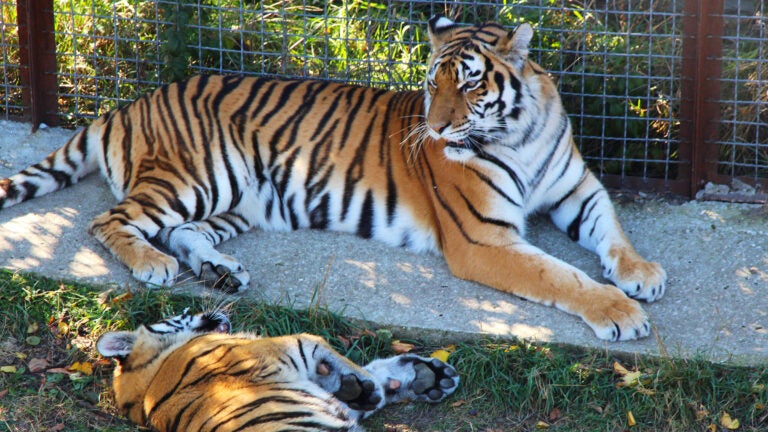
A new USC study finds that genetic diversity of the study’s captive tigers is similar to what is observed in wild populations. (Illustration/iStock)
How captive tigers can help the wild ones: Q&A with USC’s Jazlyn Mooney
The USC Dornsife professor explains how her exploration of captive tigers’ genetic ancestry could benefit the wild tiger population.
The number of tigers living in captivity has risen in the United States in recent years, prompting Congress to pass the Big Cat Public Safety Act of 2022. In fact, experts estimate approximately 5,000 tigers live in private facilities across the United States alone. Some conservation biologists have considered methods in which captive tigers could potentially help the wild tiger population.
This answer may reside in the genome of captive tigers. A recent study led by Jazlyn Mooney, co-principal investigator for the study and Gabilan Assistant Professor of Quantitative and Computational Biology at the USC Dornsife College of Letters, Arts and Sciences, and Ellie Armstrong at the University of California, Riverside, was published by PNAS. The study explored these captive cats’ genetic ancestry for the first time. Their findings could lead to more efficient methods to monitor and manage the captive tiger population in the United States.
USC News recently discussed captive tigers with Mooney.
What led to the population growth in captive tigers in the United States?
Mooney: There was a large increase in population of captive tigers for monetary purposes like the illegal wildlife trade, circus acts and cub petting facilities. There are currently more tigers living in captivity in the United States than there are living in the wild. Even with the closure of major circus acts like Ringling beginning in the late 2010s, the population size was estimated at over 5,000 tigers prior to the passing of the Big Cat Public Safety Act of 2022. We expect this new law to help curb private captive tiger ownership.
Why did you do this study?
Mooney: Previous research on captive tigers used very limited data. Ours is the first study of the complete tiger genome, so we explored common assumptions many people may have about captive tigers.
The first thing people often think about captive tigers is they might lack genetic diversity. However, it turns out the genetic diversity of these captive tigers is similar to what we observed in wild populations. This led us to think that maybe captive tigers could be used to rescue wild populations. Secondarily, we did not know if any of the individuals in the captive population had only one ancestry source (i.e., they look genetically like wild tigers). We screened the genomes for over 100 individuals and found that they all contained mixed ancestry.
How could your findings benefit wild tigers?
Mooney: We’ve seen numerous extinctions of tiger populations over the last 100 years. Though some populations of tigers have recovered, others have continued to decline at a rapid pace. Many tiger populations have decreased by as much as 90%. In theory, captive tigers with genetic diversity could be used to help boost numbers in the wild. But the issue is, how do we do that? We don’t know the answer. This is a big question that conservation managers are currently thinking about.
What’s next for this research?
Mooney: We are going to look deeper into the tiger genome. What does the recombination look like for a tiger? Does it look different than a house cat?
Since we have genetic data from a large number of both captive and wild tigers, we were also able to make a genetic ancestry panel that could be helpful to organizations like U.S. Fish and Wildlife Service. U.S. Fish and Wildlife Service now receives all goods that are confiscated from illegal activity. This can include products like teeth, claws and pelts, but can also include live animals that are being trafficked. They may want to know where confiscated products and tigers are from. In the future, it is possible for them to use our ancestry panel to do just that. For example, they could obtain DNA data from a tiger pelt and use the pipeline we developed here to figure out where that tiger’s ancestors originated from.
Another future direction is broadening our sample of captive tigers, to see if we can get more information from different sanctuaries around the world. That will take a lot of work because we want to be mindful about building rapport with the people who run these accredited sanctuaries and make sure our interests are aligned. But we’re all hopeful about our work and excited about the future of tigers.


